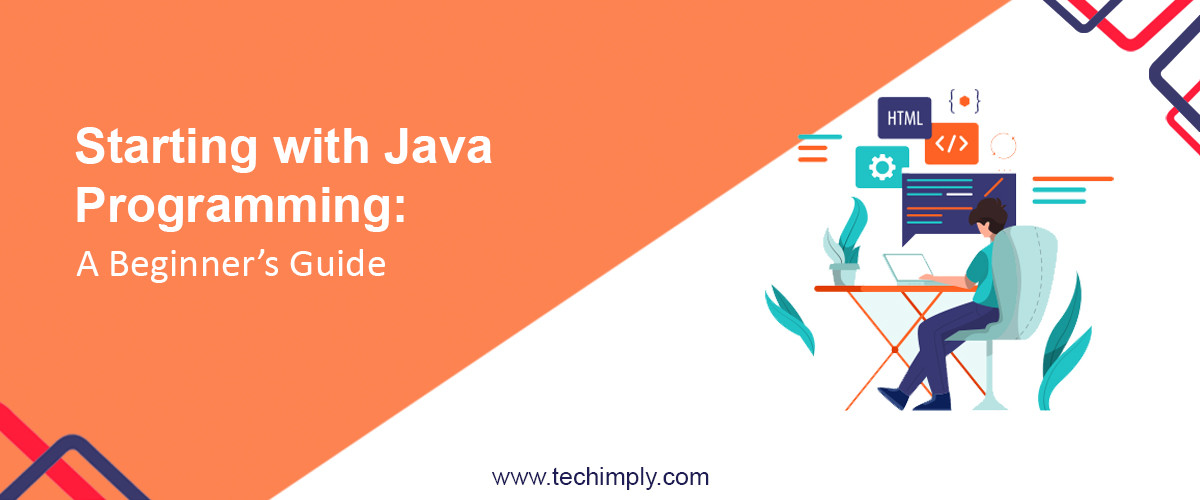Hiring new employees is a crucial procedure that has the power to either accelerate the growth trajectory of your business or turn it into a time and resource wasteland. The Applicant Tracking System is one piece of technology that has completely changed the hiring process (ATS). More than simply a database, an effective applicant tracking system (ATS) is a toolbox of capabilities that expedites the hiring process, saves time, and guarantees you discover the ideal fit for your business culture.
Nevertheless, a lot of companies aren't making the most of their ATS. These are the top ten strategies for maximising the recruiting process and boosting recruitment efforts by utilising the full potential of your applicant tracking system.
What is Applicant Tracking System?
A software programme called an Applicant Tracking System (ATS) makes it possible to handle recruiting requirements electronically, especially when it comes to hiring process efficiency. It helps recruiting managers and HR software India as well as other countries organise, screen, and get in touch with candidates.
The system's purpose is to assist in gathering, classifying, scanning, and ranking the applications for available employment opportunities according to predetermined standards including education, years of experience, skills, prior employers, and keywords. With the use of this technology, hiring procedures become more productive and efficient, enabling businesses to find outstanding prospects more rapidly and minimising the labour-intensive manual resume evaluation process.
To facilitate the tracking and referencing of possible recruits, an applicant tracking system (ATS) can also offer a centralised database including all candidate data. Furthermore, a lot of applicant tracking systems (ATS) provide functions including candidate communication tools, automatic interview scheduling, and analytics for assessing recruiting performance.
-
Recooty
-
Greenhouse
-
Pinpointe
-
BambooHR
-
VidCruiter
-
Recruitee
-
ClearCompany
-
Trakstar Perform
-
Monday.com
-
Teamtailor
-
Manatal
-
Spine
-
Zoho
Why Do You Need An Applicant Tracking System?
An applicant tracking system (ATS) is essential for expediting the hiring process and helping businesses effectively handle candidate information, job advertisements, and correspondence. It streamlines the time-consuming process of going through applications and selecting the best applicants based on preset standards. In addition to saving a great deal of time and money, this improves the applicant experience by providing fast feedback and maintaining lead engagement. In the end, an ATS streamlines the hiring process, which contributes to the development of a more robust and competent team.
An ATS can do more than simply the things listed above. Additionally, it provides a number of features that are tailored to the requirements of various businesses and their own hiring procedures. These extra features include, among others:
-
Tailored Job Advertisements
Organisations may use ATS to produce personalised job listings that showcase their culture and identity. This increases job satisfaction and staff retention by drawing applicants who are a good fit for the company's values and work environment.
-
Automated Grazing
ATS can automatically filter resumes for relevant keywords, credentials, and experience with the use of AI and machine learning algorithms. By doing away with the requirement for manual screening, this reduces human bias in the applicant selection process and saves time.
-
Relationship Management for Candidates (CRM)
Recruiters may quickly see and manage candidate profiles with the help of an applicant tracking system (ATS), which serves as a single database for all candidate data. Additionally, it provides CRM features like tailored correspondence and follow-ups, fostering a good rapport with applicants even in the event that they are not chosen for a certain position.
-
Reporting and Analytics
Through analytics and reporting tools, applicant tracking systems (ATS) offer insightful information about the hiring process. These assist in monitoring parameters including time-to-hire, cost-per-hire, and source of hire, enabling businesses to plan their future hiring strategies based on facts.
-
Integration of Mobile
Having a mobile-friendly hiring procedure is crucial in the current digital era. In order to make the recruiting process more effective and accessible, several applicant tracking systems (ATS) include mobile interfaces that let job seekers submit for positions and recruiters analyse applications while on the move.
All things considered, an ATS increases the efficacy of the hiring process in addition to streamlining and simplifying it. It supports recruiting choices, employer branding, and Attendance management software top talent for businesses. It's realistic to assume that an applicant tracking system (ATS) will remain essential to contemporary hiring procedures given the rapid improvements in technology.
What Benefits Can ATS Users Experience in the Business Accomplishing?
The exceptional effectiveness of an Applicant Tracking System (ATS) in expediting the hiring process is one of the main advantages for companies utilising one. It saves time and money by automating the process of going through applications and selecting the best applicants based on predetermined standards. Additionally, applicant tracking systems (ATS) improve the candidate experience by guaranteeing a seamless application process and prompt communication, both of which benefit the company's reputation.
It also provides strong data analytics, which helps recruiting managers make wise choices and continuously improve their recruitment tactics. Businesses may concentrate more on strategic elements like applicant engagement and talent retention by using technology to streamline manual activities and increase efficiency in the recruiting process.
The enhanced applicant screening procedure is one of the ATS's main benefits for companies. Companies can find top talent more quickly because of its sophisticated features, which include keyword matching, customisable pre-screening questions, and automatic resume processing. Better hiring decisions may be made as a consequence of recruiters being able to focus their time and energy on interviewing just the most qualified applicants.
Additionally, applicant tracking systems make it simpler to track and Leave management software candidates by offering a centralised database for all recruitment-related data. This removes the possibility that the hiring team's incompetence or lack of communication may cost them potential hires. Businesses may also utilise this data to continuously evaluate and enhance their recruitment tactics.
Top 10 Ways of Using ATS to Save Efforts
1. Make Strategic Sources with Advanced Talent Pipelining
Though they may not be actively Employee reward software , the most qualified applicants are frequently receptive to the appropriate offer. To remain in touch with these passive applicants, you may set up a talent pipeline with a sophisticated applicant tracking system. Talent pipelining enables you to gain industry knowledge, cultivate contacts over time, and improve your readiness for job opportunities. Your staff won't become overworked if you use your applicant tracking system (ATS) to automate and monitor communication.
2. Make Candidate Screening Automatic
With ATS, you may establish precise requirements for any job vacancy. Make use of these parameters to automatically screen candidates and exclude those who don't fit the requirements. Only the most promising candidates will advance to the next stage thanks to an effective applicant tracking system (ATS) that can drastically cut down on the amount of time spent on manual scanning.
3. Make Job Postings More Effective to Draw Top Talent
It could take a while to create the ideal job posting. You need to think about smart keyword placement for SEO citations in addition to making sure it appeals to top personnel. The built-in capabilities in your applicant tracking system (ATS) should assist you in crafting job descriptions that are enticing and simple to find. Frequently, these programmes scan your content for pertinent keywords and offer optimisation recommendations.
4. Make Candidate Communication Simpler
Delays in communication might result in the loss of talented individuals, particularly in the competitive job market of today. Collaborating with recruiting teams and communicating with applicants straight from the system is made possible by an applicant tracking system (ATS) that has integrated email and messaging features. Additionally, you may create email templates for regular correspondence that you send to prospects, schedule interviews, or provide comments on their applications.
5. Use Team Functionality to Improve Collaboration
Seldom is hiring done by one individual. ATS systems include team functions that facilitate the involvement of various stakeholders in the hiring process. Your applicant tracking system (ATS) may work as a single centre for all recruitment-related processes, from assigning tasks and positions to monitoring team activity. This guarantees that everyone is in agreement and expedites the process.
6. Make Data-Driven Decisions with Advanced Reporting
A tonne of data is gathered by your applicant tracking system (ATS) that can provide you important insights into how you hire. Among other measures, reports might examine diversity statistics, time to employ, and source effectiveness. These reports can assist you in finding process bottlenecks, streamlining your sourcing tactics, and making sure recruiting laws are followed.
7. Encourage a Satisfying Experience for Candidates
The reputation of your business may be significantly impacted by the applicant experience. You may stay organised and professional in your contacts with prospects by using an applicant tracking system (ATS). Automated processes include sending out updates on a regular basis, acknowledging applications received, and conducting feedback surveys. Even for those who aren't chosen, a great candidate experience can result in recommendations and brand promotion.
8. Carry Out Thorough Candidate Evaluations
You may analyse candidates' abilities and cultural fit with the integrated exams that are included in many applicant tracking systems. These tests may be customised to meet certain work needs, and they will offer structured feedback to support your decision-making. To further assess applicants before seeing them in person, you may also use pre-recorded video interviews.
9. Simplify Handling Offers and Orientation
In order to provide a smooth transition from offer to onboarding, ATS systems can be integrated with HR management software. Digital signatures and standard offer letter templates may streamline the offer procedure, and onboarding procedures guarantee a seamless onboarding experience for new employees. In order to save everyone important time, the modules may also help with background checks, document gathering, and creating new employee accounts.
10. Regularly Update and Train Your Team
An ATS is only as useful as its users. Frequent upgrades guarantee that you're utilising the newest features, and continuous training keeps your team knowledgeable and proficient in maximising the capabilities of the system.
Conclusion
Applicant Tracking System (ATS) streamlines the recruitment process significantly, saving time and reducing manual effort. Integrating the top practices into your recruitment strategy can transform how you attract, assess, and onboard talent. With solutions like those offered by Techimply, organisations can harness the power of automation, advanced analytics, and seamless integration capabilities to enhance their hiring processes.
The benefits of implementing an ATS extend beyond simplifying recruitment; they foster a more strategic HR function that can contribute to the overall success of an organisation. By selecting a system that aligns with specific organisational needs and making full use of its features, companies can ensure they not only attract but also retain top talent.



.jpg)

